
Everybody loves Oystercatchers. They are large, and they are loud, and they are very black-and-white. That’s why they are called Sea Pies.
And they are sufficiently common along virtually all stretches of coast, both open sea and estuary, to always be relied upon to brighten up a potentially dull day of kayaking when other wildlife are being elusive.
They clearly weren’t paying attention when their creator might have suggested that cryptic brown-coloured plumage would be the best approach to long life, to avoid catching the eye of a passing Peregrine.

With their uncompromising colour scheme they seem to have chosen the opposite extreme, and perhaps keep predators at bay through sheer bullishness and strength of personality.
It is certainly a strategy that seems to work, because they are a long-lived species with the current record standing at forty years. My own Oystercatcher record is currently four (or maybe five) years…..I have seen this one, nice and easy to spot with its aberrant white plumage, around the Teign estuary since 2015/6.
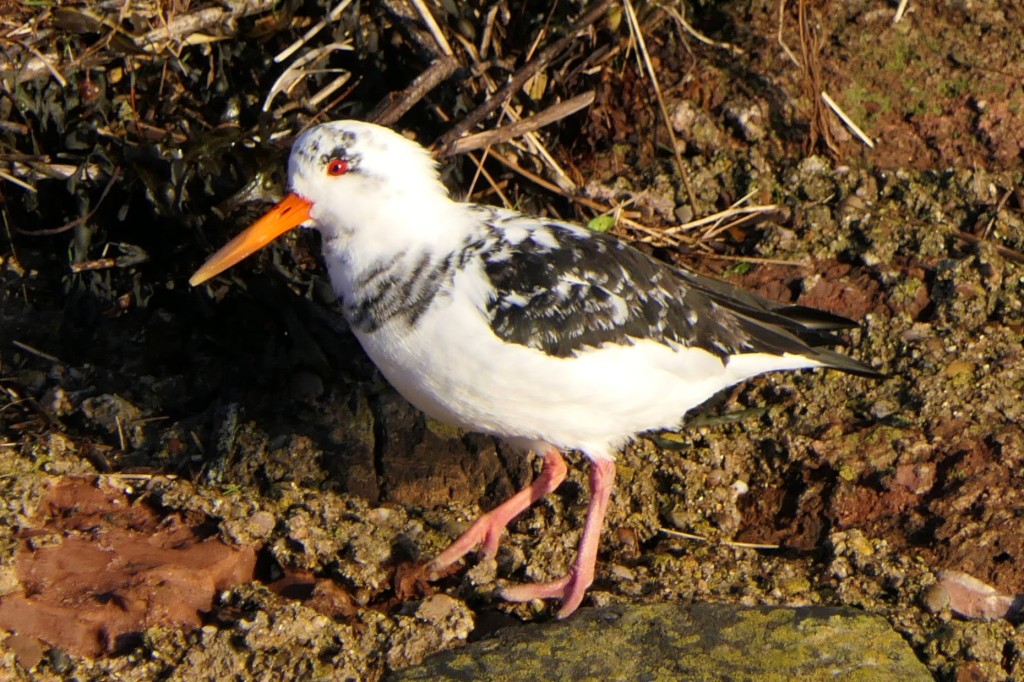
Ground-nesting waders have a tough time in Devon and Cornwall, especially those that nest along the coast, like Oystercatchers. There is just so much disturbance from people. Even a paper written in the mid seventies stated that nesting waders suffered from the increasing number of ‘trippers’.
So it is no surprise that their most successful breeding location around the Cornish coast is Looe island, owned by Cornwall wildlife trust, where access is closely regulated. Very few people. No dogs.
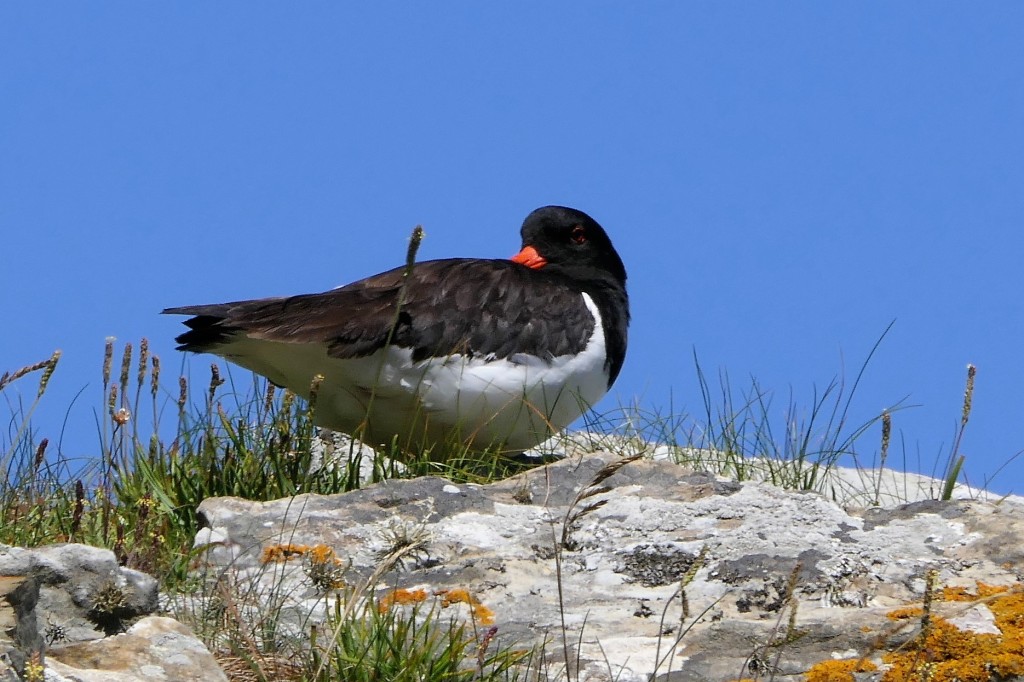
Dogs off the lead worry the birds even more than their relatively slow moving owners.
So I have been very pleased to come across quite a few Oystercatcher chicks along the (mainland) coast of Devon and Cornwall over the last couple of years. And this season in particular I have been specifically looking out for, and listening to, Oystercatchers and can identify when they have a nest youngsters nearby.
Not only do the adults ‘mob’ me, by flying out across the sea directly towards me and veering away at the last minute, calling loudly all the time, but they also have a very specific warning call when chicks are around. From what I have seen this short, sharp call makes the chicks go and hunker down beside a rock somewhere.
Here’s an adult shouting a warning to its chick which is a hundred yards away. It is a sort of amber alert, because I am supping a cup of coffee, and downing a cherry bakewell, on their beach.
This is very different to their usual contact calls when they are in a group…..
I have also worked out the sort of places they like to nest. They would prefer to lay their eggs on the shingle at the top of a beach, such as they do at Looe Island, But virtually every beach along the coast is accessible to people and an increasing numbers of kayakers (!) and paddleboarders.
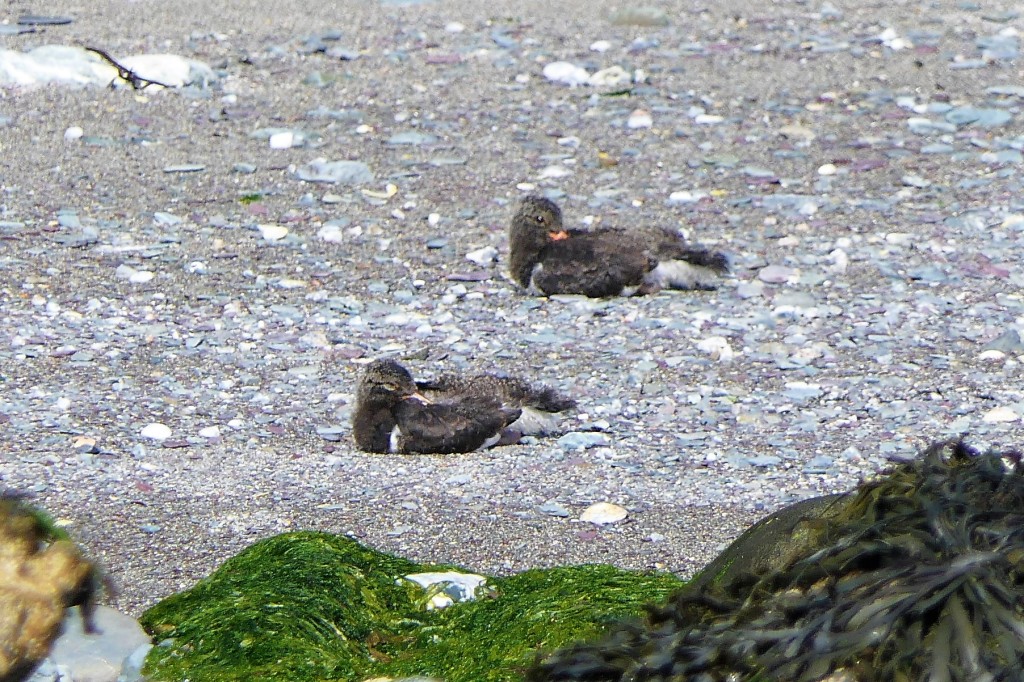
Too much disturbance.
So they choose mini coastal islets which have a bit of vegetation on top, and above the reach of the highest tide and biggest wave. Away from people, away from dogs, and hopefully protected from other predators like foxes and rats. I have yet to see one sitting on a nest, but don’t go looking because I remain seated in my kayak, watching from the water.
Because Oystercatchers are unique amongst waders in that the adults bring food to their chicks, there doesn’t need to be direct access to a beach around the nest site, so these little rocky islets are ideal. This is in contrast to waders such as Ringed Plovers, which have to nest on the beach, or very close by, because their young feed themselves from the minute they emerge from the egg.
I really got in the groove this year, and spotted quite a lot of Oystercatcher families along the coast of Cornwall, and sent in my photos and the location to Cornwall Birdwatching and Preservation Society, most of which are previously unknown because they are unviewable from the coast path.
It would seem that paddling quietly and unobtrusively along the coast is probably the best way to survey Oystercatchers. It causes minimal disturbance (no worse than a passing crow) and the kayak can certainly get to places where few other craft can reach.
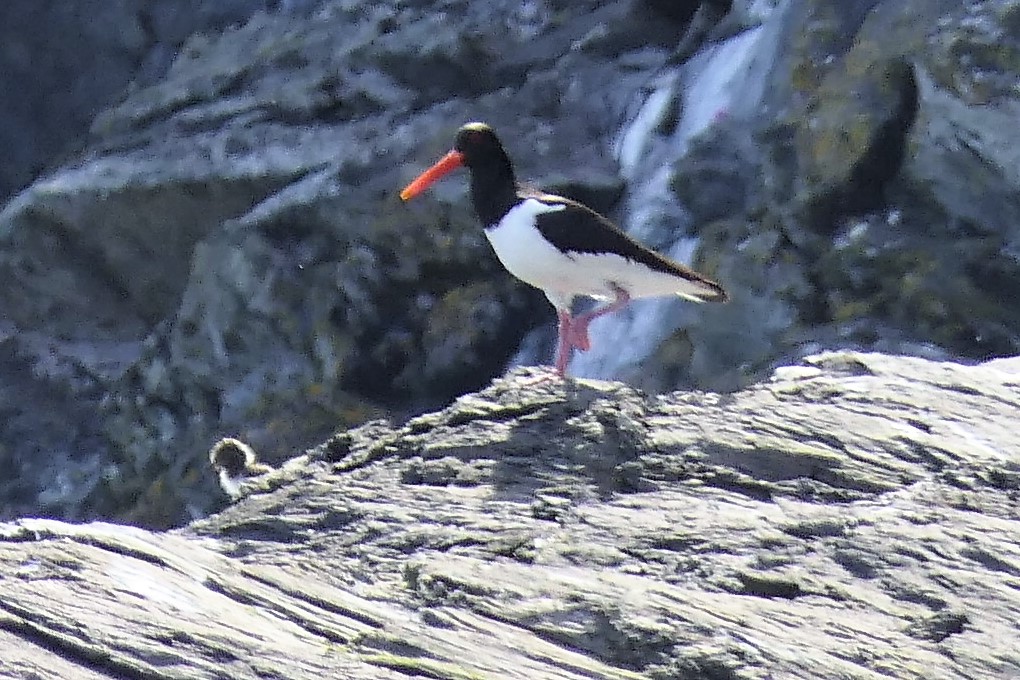
Even though I didn’t start till late, I found nine young Oystercatchers (eight on the south coast, one on the north), and was mobbed at another three territories.
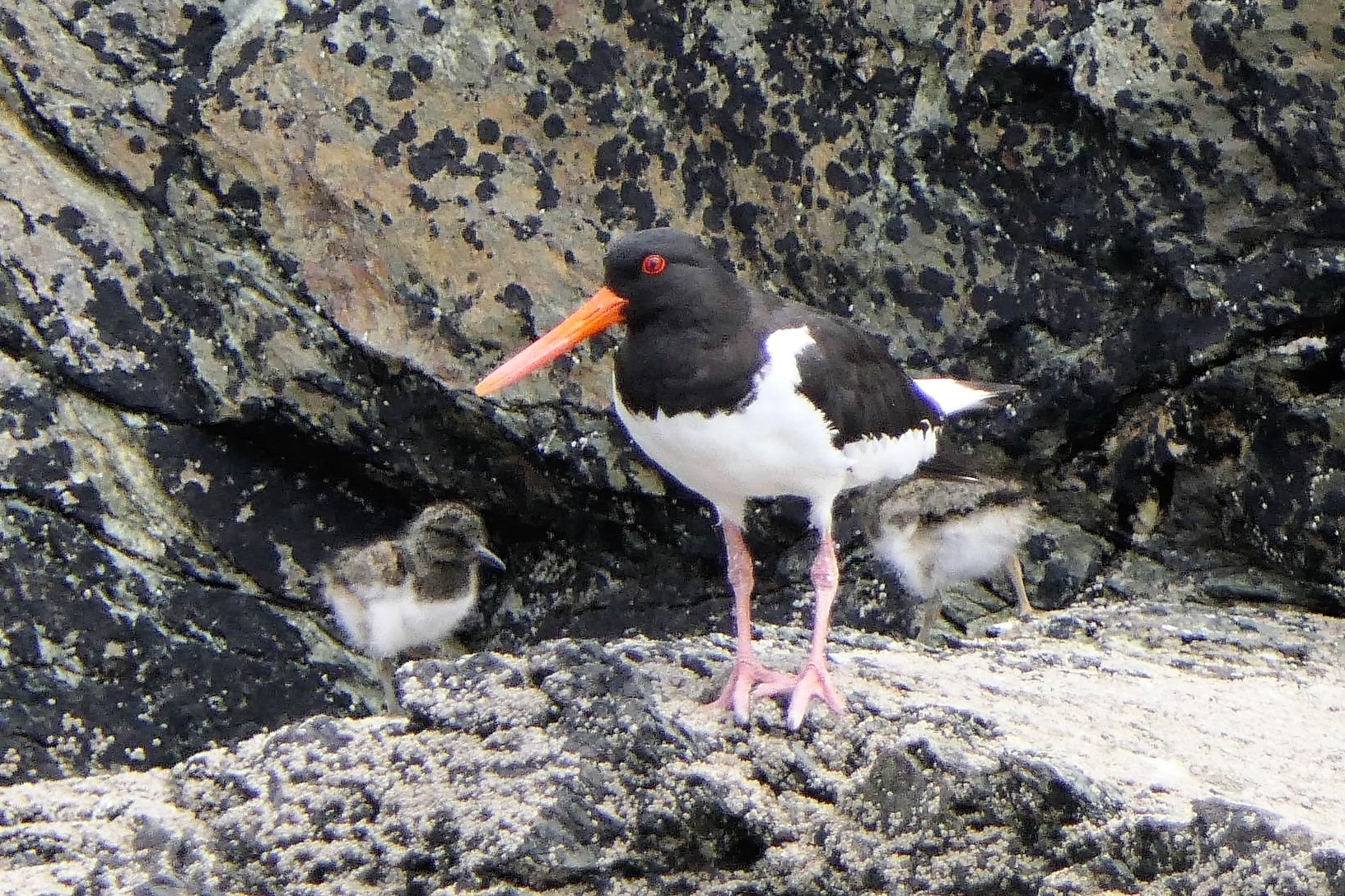
Now I know that ‘pik’ alarm call , I am hopeful of finding a load more next year.
Juvenile Oystercatchers resemble their parents, but can be recognised by a black-tipped bill and blueish, not pink, legs. They also lack the orange iris and eye-rim.

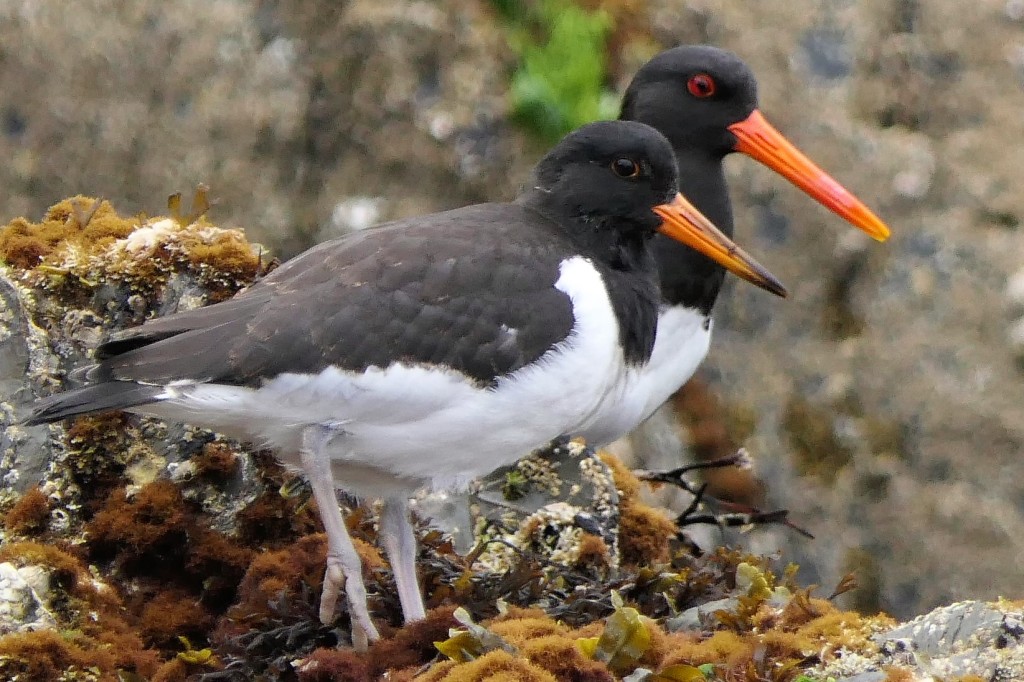
From what I observed over the summer they stay together as a family around the nest-site until the end of July, and then disperse along the coast to meet up with other families and non-breeding birds. Numbers are expanded further later in the year with the arrival of migrants from Northern Europe.
Providing a focus of interest for a large number of Oystercatcher fans, such as myself.
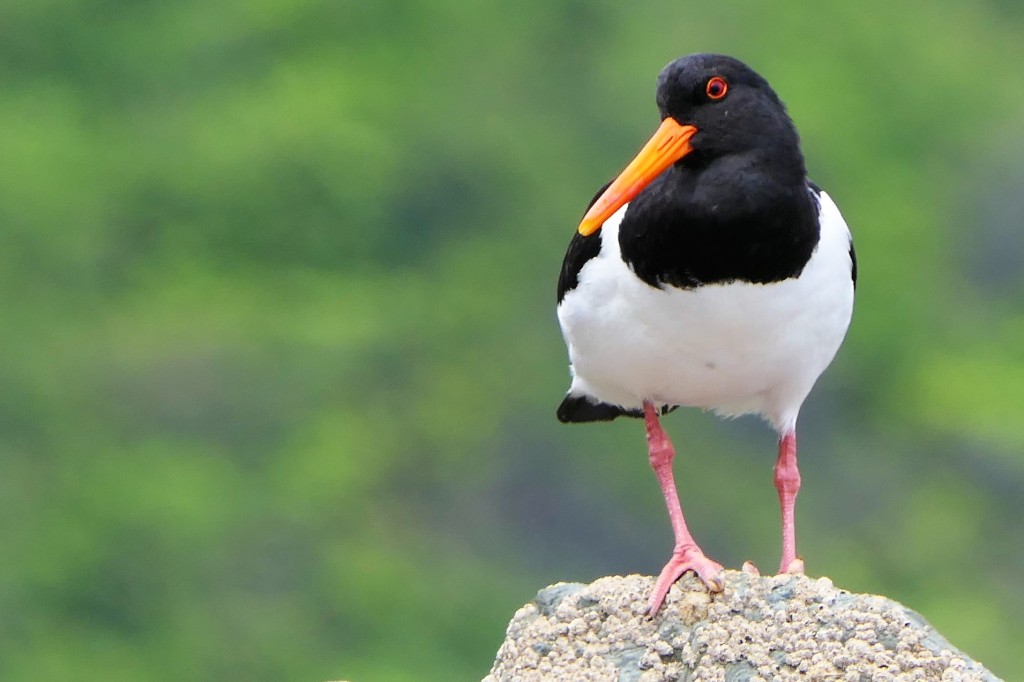
This bird is doing what Oystercatchers don’t often do….swim. But it probably doesn’t want to. It is trying to lure the bloke on the beach away from its chick. You can hear that specific short sharp alarm call again quite nicely.
We’ll finish with another Sea Pie social. Guaranteed to make you smile.
(all photos and videos taken from the kayak seat)
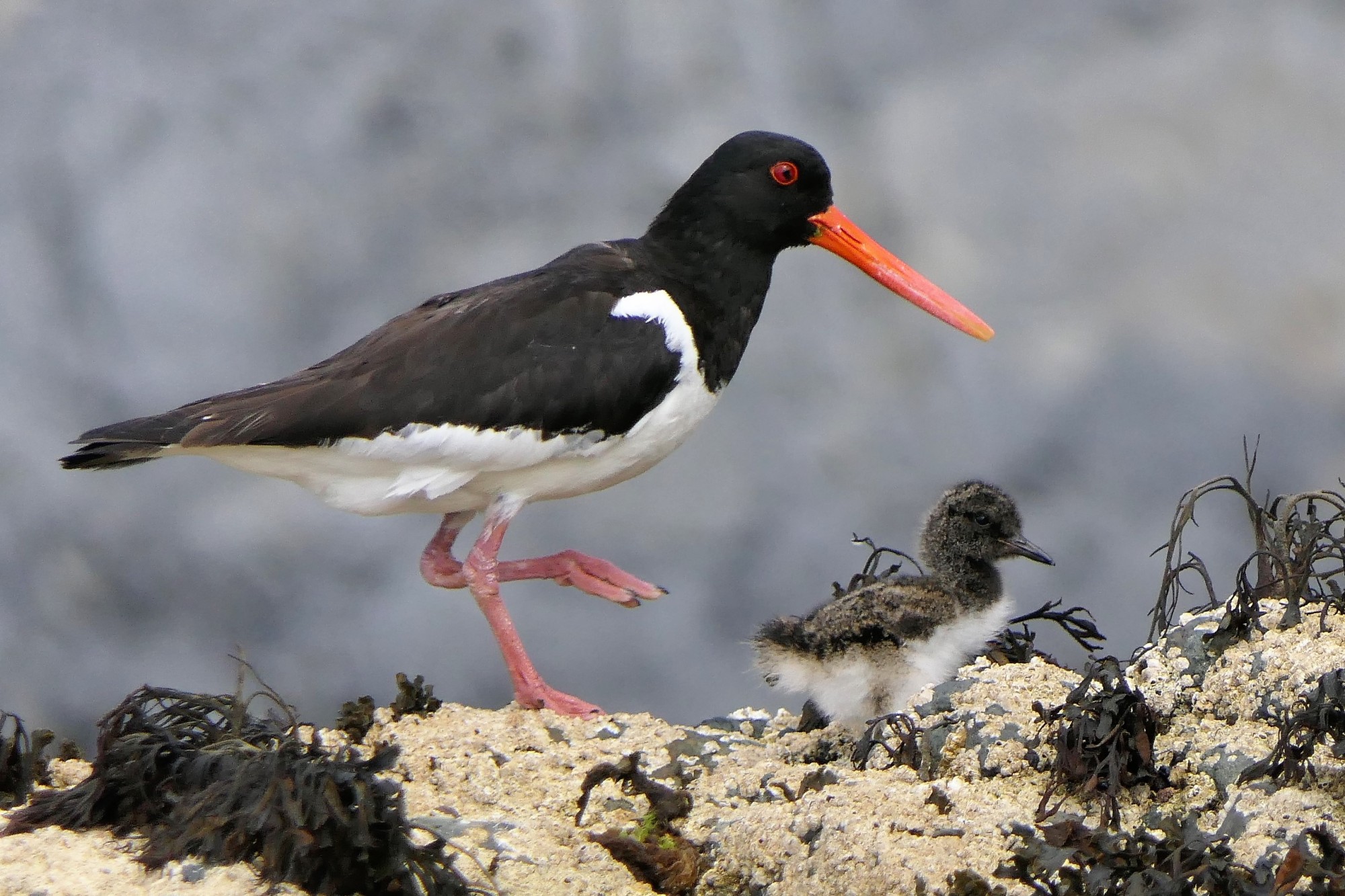
Very interesting Rupert. At least the youngsters have good camouflage!